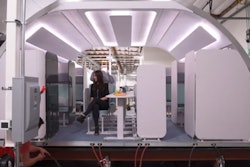Morality Algorithm For Self-Driving Cars?
Experts widely acknowledge that deploying autonomous vehicle technology will make driving much safer by taking human error out of the equation.
But some are still uncomfortable with trusting their lives to even the most advanced self-driving systems — particularly in construction zones, rough weather or other unpredictable scenarios.
A new study, however, seems to indicate that machines can be programmed to make decisions on moral grounds just like a human would.
Researchers from the University of Osnabrück in Germany used immersive virtual reality to study human behavior in driving simulations of a foggy day in a suburban neighborhood.
The demonstration asked drivers to respond to unexpected, unavoidable dilemmas with humans, animals and inanimate objects.
Their decisions about which objects would be spared were developed into a statistical model, which could then be taught to self-driving systems or described using an algorithm.
The findings appear to contradict long-held beliefs that moral decisions couldn't be modeled, but it also presents new dilemmas, such as how to assign blame in real-life scenarios or whether human ethics should be incorporated by machines at all.
As autonomous cars and other AI systems become increasingly prevalent, the study's authors warned that humans will need to make those determinations before machines make them on their own.
SO, WHAT DO YOU THINK?
Would this kind of morality algorithm make people more comfortable with autonomous driving — or less comfortable? Tell us your thoughts in the comments below.
Robot Sense Of Touch
A recent innovation out of Carnegie Mellon University has unleashed a robot with a sensitive touch.
Using the industrial robot Baxter, a post-doctoral fellow at CMU has designed a way to allow the robot to carefully interact with a variety of objects.
With Fingervision, the 300-pound robot can perform delicate tasks such as pick up a flower, an origami figure or even peel a banana. The system is comprised of a pair of 3D-printed robotic grippers that are covered in a clear silicone wrap covered in black spots.
A small $50 camera inside tracks the movement of the dots as they become distorted when the skin comes in contact with an object. The system also alerts the robot when an object is slipping, allowing it to adjust its grip.
Researchers say the increase sensitivity could help the industrial robots interact more safely with humans in manufacturing settings.
SO, WHAT DO YOU THINK?
Do you think Fingervison is a useful solution to making robots more safe in the workplace? Tell us what you think in the comments below.






















